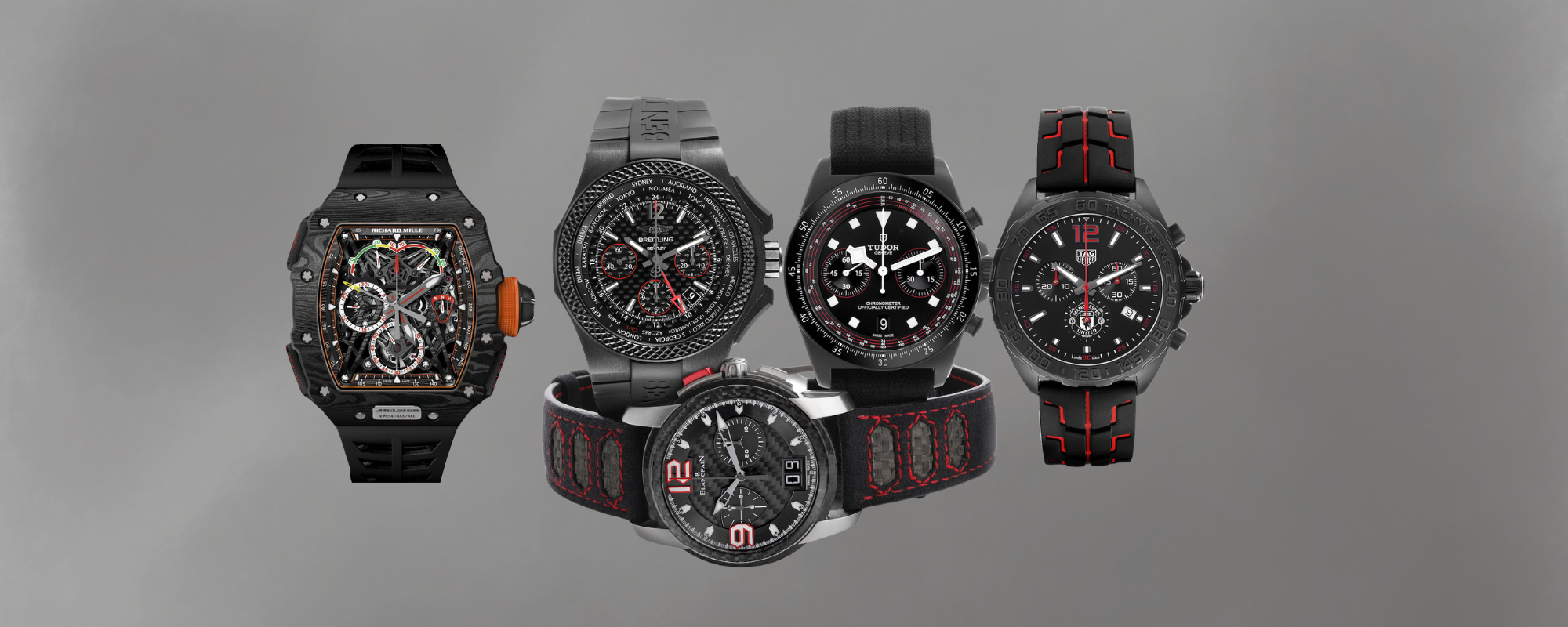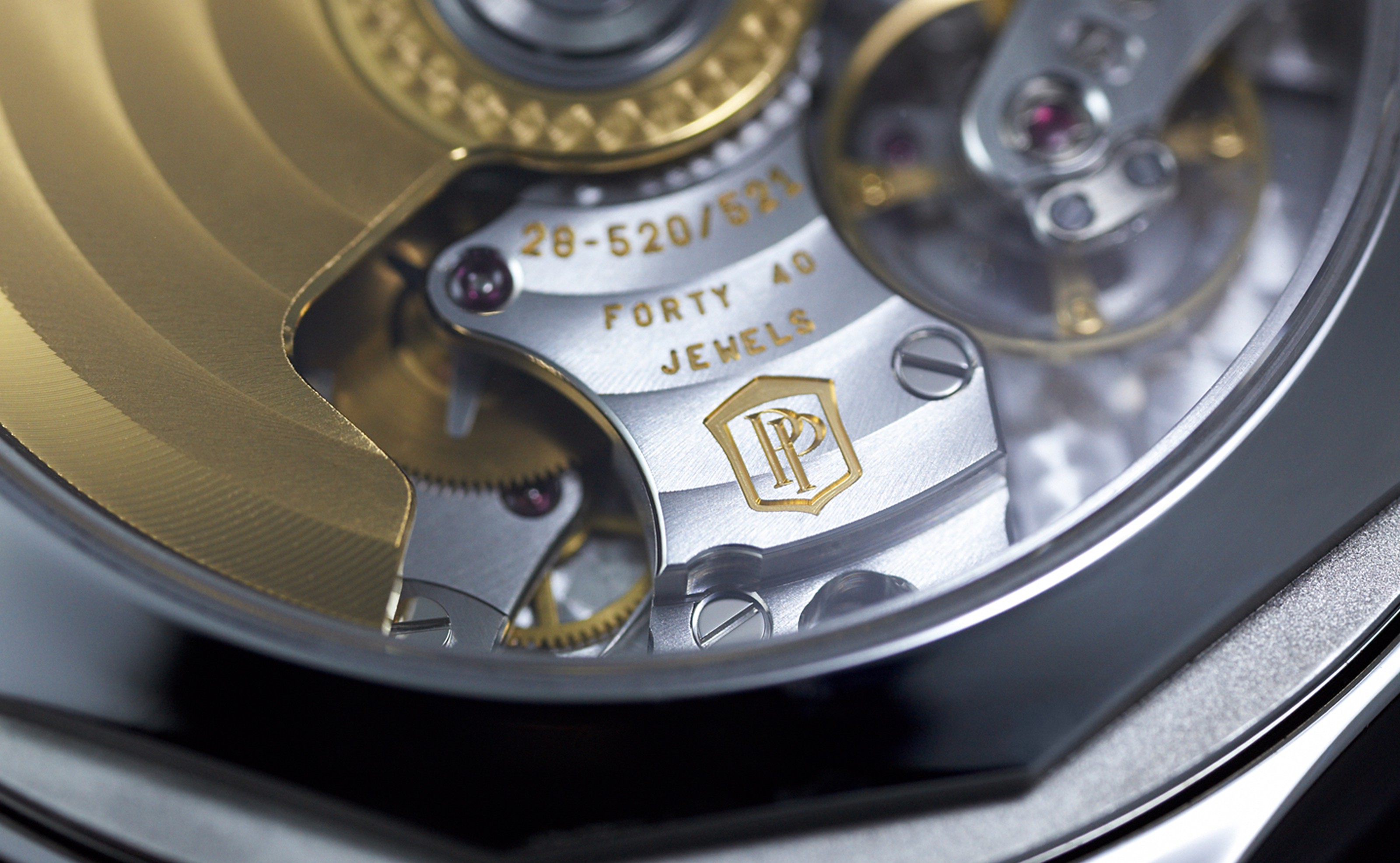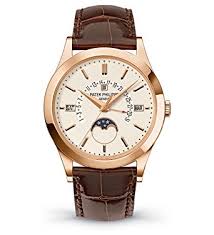Innovative Material of the 21st Century
The innovative material of the 21st century we will discuss was originally used in the aerospace and automotive industries. At the same time, its unique properties turned out to be in demand in the world of high watchmaking. This material is carbon - a composite consisting of carbon fiber embedded in a matrix of polymer resins. The main feature and key property of carbon is its extraordinary strength combined with relatively low weight, reaching 1500 kg/m³.
Carbon Watches: History and Advantages
Forged carbon was invented in the early 2000s when Lamborghini and Callaway Golf teamed up with the University of Washington to conduct joint research. Their goal was to create a material strong enough for car manufacturing and golf. The collaboration led to the invention of carbon fiber, which comes in two types:
Sheet carbon. Carbon threads are mixed with epoxy resin and woven into composite sheets. These sheets are then used by watchmakers to craft cases, dials, and straps. This type of carbon composite is also widely used in motorsport.
Forged carbon. Considered a more advanced variant of carbon fiber: sheet carbon is mixed with shorter carbon fibers until it becomes a paste-like mass. This composite has the same properties as sheet carbon but can be created in minutes instead of hours. Moreover, forged carbon is suitable for producing smaller components, such as those used in complex watch bracelets.
The composite also found wide application in the production of racing cars and space shuttles. This is explained by the fact that the material contains graphite, which has the same chemical structure as diamond. In the finished product, carbon eliminates the formation of even microscopic cracks. Additionally, carbon fiber is completely antimagnetic.
Strong and lightweight carbon fiber naturally attracted the attention of watchmakers. One of the first to use it was Audemars Piguet’s legendary designer Giulio Papi. He created models whose unique aesthetics appealed to young, daring, bold, and experimental clients. His carbon watches deservedly won the 2008 Grand Prix d’Horlogerie de Genève in the sports category.
Other advantages of carbon watches include:
Reliability and durability - carbon watches are so robust that they withstand the harshest conditions.
Resistance to corrosion, water, and dust - significantly extending their lifespan.
Wear comfort - carbon accessories are very light, elastic, pleasant to the touch, and hypoallergenic.
Authenticity - the distinctive carbon texture gives models futuristic sophistication while maintaining a hi-tech charm.
Such watches may not always suit a classical style, yet they are considered an embodiment of modernism.
Carbon Kings of the Watch Industry
From experimental laboratories, carbon watches first entered the secret sphere, becoming the main timepieces for the U.S. Navy’s E.O.D. underwater demolition teams. Later, they were eagerly embraced in the world of sports accessories. Forged carbon has become increasingly common, but the number of pieces in various brand collections remains limited, fueling growing demand. The year 2013 can be confidently called the year of the Carbon Kings. Here are some of them:
Bvlgari Octo Finissimo Carbon Gold Perpetual Calendar 🏛️
At just 7.6 mm thick, these watches are practically weightless thanks to forged carbon.
40 mm forged carbon case with matching dial.
Rose gold crown, hands, calendar indicators, and bridges.
Caliber BVL 305 with ultrathin automatic microrotor in rose gold.
60-hour power reserve + perpetual calendar with day, month, and retrograde date.
Integrated carbon bracelet with folding clasp.
Hublot Big Bang Tourbillon SR_A 🎨
An artistic creation by British designer Samuel Ross in collaboration with Hublot.
44 mm forged carbon and titanium case with honeycomb design, sapphire crystals front and back.
Skeleton dial, applied markers and hands with SLN.
Automatic caliber HUB6035 with in-house microrotor.
72-hour power reserve.
Limited edition of only 50 pieces.
And this is far from a complete list. Other notable carbon “kings” include Hublot Big Bang Unico Gold Sky Blue, Roger Dubuis Excalibur Spider Carbon, Panerai Luminor Carbotech 3 Days, and Graham Chronofighter Superlight Carbon. The future of carbon fiber watches looks very promising - as technologies advance, the imagination of watchmakers, engineers, and designers will undoubtedly enrich high watchmaking with more fantastic creations.



